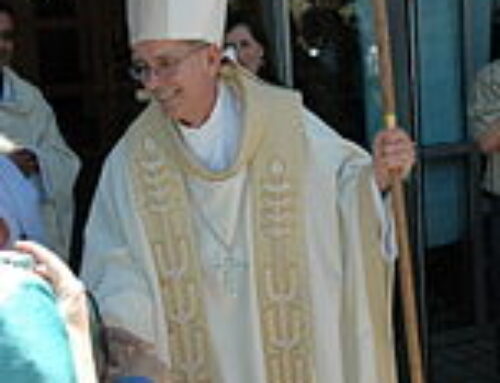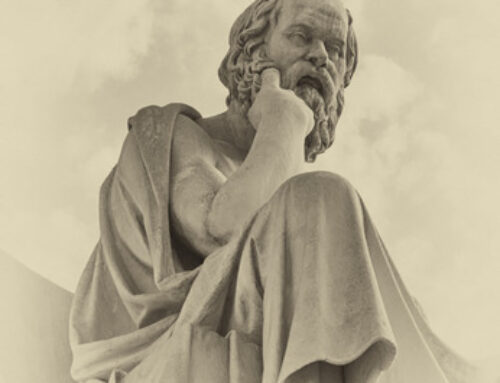Whatever happened to sin? For the answer to this perplexing question, simply replace the question mark with a period. What happened to sin is that the “whatever” perspective on right and wrong has rendered sin archaic. When whatever feels right is believed to be right, moral reasoning is consigned to the junk heap, conscience is reduced to an emotion, and the concept of sin becomes meaningless.
The “whatever” perspective has been around for at least a couple of centuries, but it gained a foothold in the field of ethics in the 1960s. Moral theology, the first cousin of ethics, is based on religion as well as philosophy, which enabled it to resist “whatever” thinking and maintain its traditional moral teachings for a time, but that resistance has steadily weakened over recent decades.
Today, Catholic moral teaching has descended from clarity and consistency into confusion and contradiction. To understand the seriousness of this development, we need only compare the Catholic Catechism’s treatment of sin with the treatment of sin in the recent 45-page Vatican document, Enlarge the Space of Your Tent.
The Catechism not only mentions “sin” in various chapters in its 848 pages, but devotes an entire article to it, with five detailed parts and a summary (paragraphs 1846-1869). The parts are Mercy and Sin, The Definition of Sin, The Different Kinds of Sin, The Gravity of Sin: Mortal and Venial Sins, and The Proliferation of Sin. In this one article alone the word “sin” is used 87 times! In another section (paragraph 976) the Catechism affirms that Jesus gave the Apostles and their successors “His own divine power to forgive sins.”
The Vatican Document, in sharp contrast, mentions “sin” a single time, in paragraph 44. Here is that mention: “Other reports note the influence that ethnic discrimination and a culture based on tribalism has on the life of ecclesial communities. These realities form not just the background context of our mission but also define its focus and purpose: the message of the Gospel that the Church is charged to proclaim must also convert the structures of sin that hold humanity and creation captive.” [Emphasis added]
The implication of this passage is that the most important sins–and perhaps the only ones to be addressed in churches–are ethnic discrimination and tribalism. The Vatican authors of the document might say its brevity (45 pages) precluded a fuller treatment of the matter, yet those authors managed to find space for the following passage:
“Among those who ask for a more meaningful dialogue and a more welcoming space we also find those who, for various reasons, feel a tension between belonging to the Church and their own loving relationships, such as: remarried divorcees, single parents, people living in a polygamous marriage, LGBTQ people, etc. Reports show how this demand for welcome challenges many local Churches: “People ask that the Church be a refuge for the wounded and broken, not an institution for the perfect. They want the Church to meet people wherever they are, to walk with them rather than judge them, and to build real relationships through caring and authenticity, not a purpose of superiority” [Emphasis in original]
The Church’s traditional teaching on sin is directly related to the subject matter of this passage. The Vatican authors failure to mention it here suggests that they regard sin as no longer relevant, which implies a surrender to “Whatever” thinking.
Interestingly, though the Vatican document mentions sin only once, it mentions “reconciliation” four times: “unity and reconciliation must continue to be a priority . . . the processes of peace-building and reconciliation . . . offering healing, reconciliation and liberation . . . renewal and reconciliation.”
Now the word “reconciliation” is not new, but in recent years it has been elevated above the better-known names for the sacrament, “Penance” and “Confession.” The change has not drawn Catholics to the sacrament, nor even helped them understand it better. It has instead de-emphasized the necessary conditions for forgiveness and reconciliation with God, which are acknowledgement of one’s sins and acceptance of Christ’s direction to “go and sin no more.”
Here too, the Vatican document is in sharp contrast with the Catechism. The latter keeps the emphasis where it has traditionally been. It states five aspects of the sacrament–“Conversion,” “Penance,” “Confession,” “Forgiveness,” and “Reconciliation” in that order–and notes that the first three refer to the sinner’s action, the fourth to the priest’s granting of absolution, and the fifth to “the love of God who reconciles.” (Paragraphs 1423-1424)
As I was wrestling with this internal incompatibility that has befallen Catholic teaching, I recalled a passage from G. K. Chesterton’s brilliant work Orthodoxy, published one-hundred fifteen years ago, that is every bit as relevant today as it was then:
“The ancient masters of religion . . . began with the fact of sin — a fact as practical as potatoes. Whether or not man could be washed in miraculous waters, there was no doubt at any rate that he [needed] washing. But certain religious leaders in London, not mere materialists, have begun in our day not to deny the highly disputable water, but to deny the indisputable dirt. Certain new theologians dispute original sin, which is the only part of Christian theology which can really be proved. Some . . . admit divine sinlessness, which they cannot see even in their dreams. But they essentially deny human sin, which they can see in the street.” [Emphasis added]
I am certain that if Chesterton were with us today, he would be profoundly saddened to see the Catholic hierarchy attempting to straddle two incompatible views: the modern pagan view that denies the existence of sin, and the Catechism view that affirms it. He would surely advise them that they cannot have it both ways and that the attempt to do so, if continued, will only lead more and more Catholics to leave the Church.
Copyright © 2023 by Vincent Ryan Ruggiero. All rights reserved



